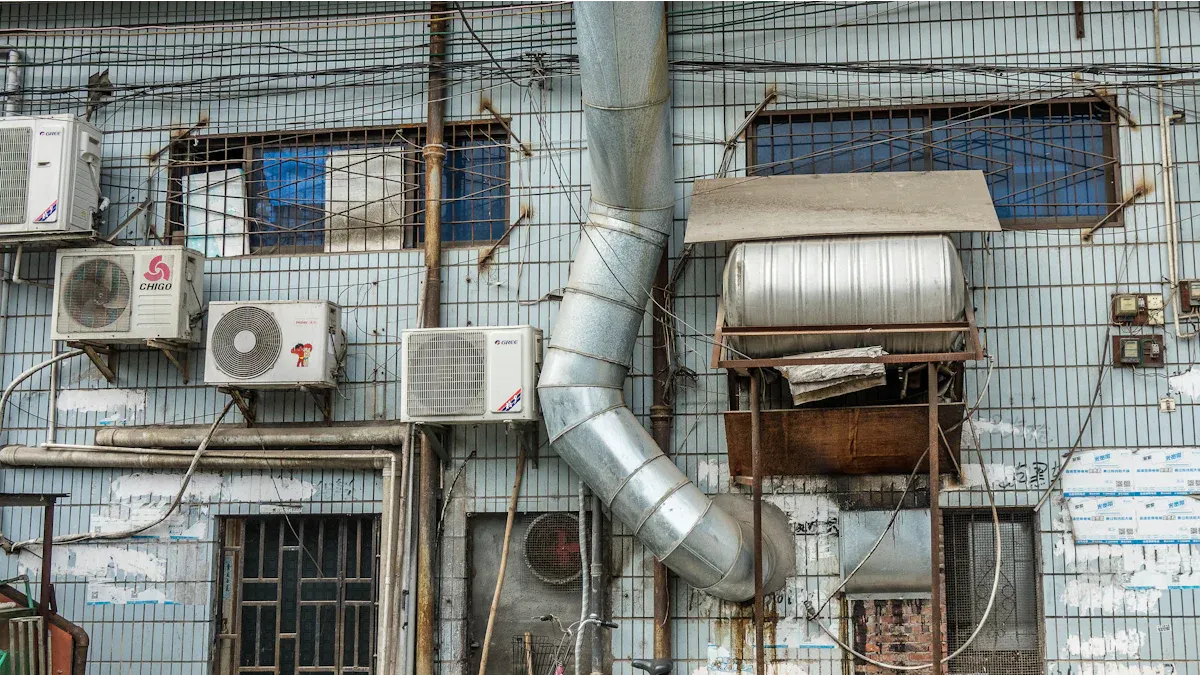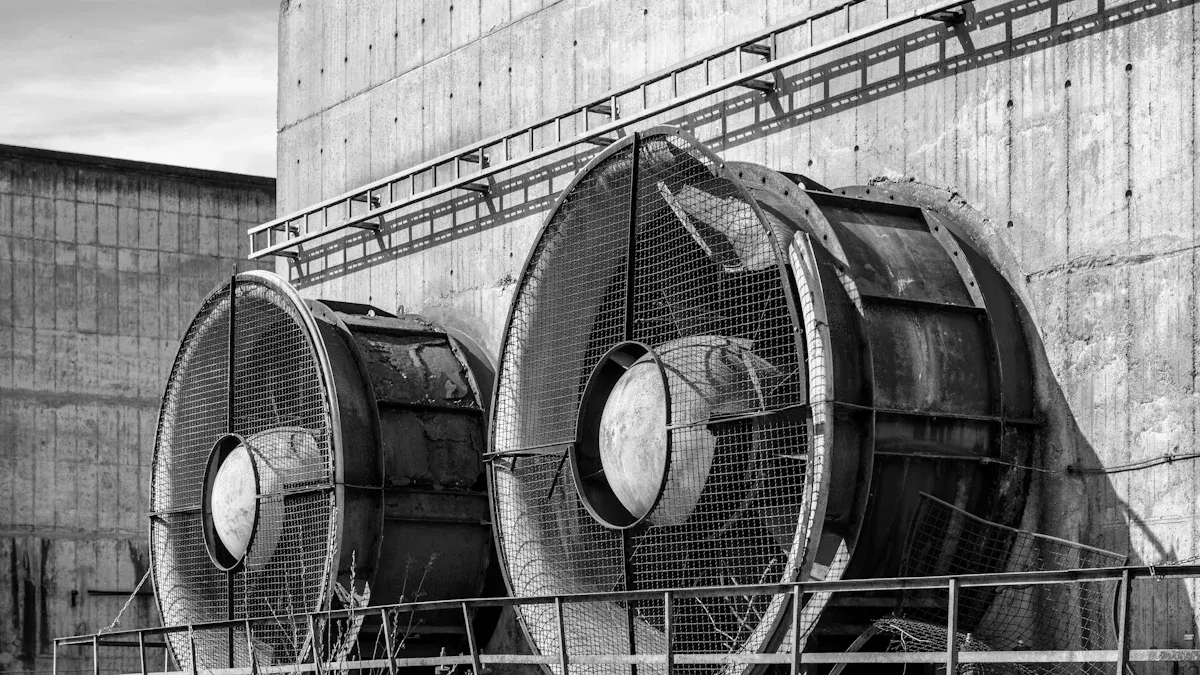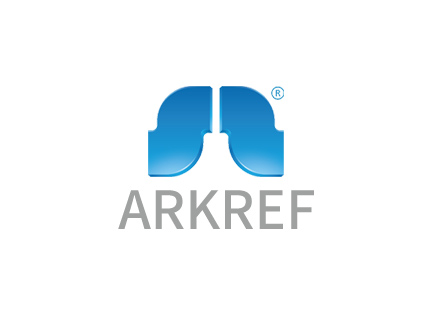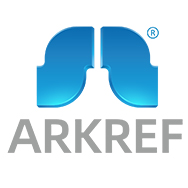Understanding Water Chillers and Their Industrial Applications

A water chiller is a machine that cools liquids like water. It uses a refrigeration process to take heat away from them. This keeps the liquids at the right temperature. These machines are very important in industries needing exact temperature control. They help things run smoothly and stop machines from getting too hot.
Keeping the right temperature is important for making products safely and well in industries like factories, medicine, and food.
Key Takeaways
Water chillers help keep exact temperatures in factories, hospitals, and food plants.
Picking energy-saving chillers can cut power bills and help the planet.
Taking care of chillers often is important to keep them working well and avoid expensive fixes.
There are different chillers, like air-cooled and water-cooled, for special cooling jobs and places.
Using accurate chillers improves safety and quality in delicate tasks, like in labs or hospitals.
What Are Water Chillers and How Do They Work?

Definition and Purpose of a Water Chiller
A water chiller is a machine that cools liquids like water. It helps keep the temperature steady for different processes. These machines are important in factories and businesses. They stop machines from overheating and help products stay high-quality. For example, data centers use chillers to stay cool, and hospitals use them to keep rooms at the right temperature.
Modern chillers use smart technology to work better and save energy. They are made to cool things efficiently and reliably. Some, like Atlas Copco’s chillers, follow strict energy-saving rules. These chillers use less water and power while working well for a long time.
Key Components of Chillers
Chillers have several main parts that work together:
Compressor: This part pushes the refrigerant, making it hotter and under pressure.
Condenser: It cools the refrigerant, turning it from gas to liquid.
Evaporator: This part takes heat from the liquid being cooled, turning the refrigerant back into gas.
Expansion Valve: It controls how much refrigerant flows, keeping the cooling process smooth.
Control Systems: These systems help monitor and adjust the temperature precisely.
These parts work as a team to keep things cool. That’s why chillers are so important for industries needing exact temperatures.
The Cooling Process in Chillers
Chillers cool things by following a step-by-step process:
Heat Absorption: The liquid to be cooled goes into the evaporator. The refrigerant takes heat from the liquid, making it cooler.
Compression: The refrigerant, now gas, moves to the compressor. The compressor makes it hotter and under pressure.
Heat Release: The refrigerant goes to the condenser, where it releases heat into the air or water. This turns it back into liquid.
Expansion: The refrigerant passes through the expansion valve. This lowers its pressure and temperature. Then, it goes back to the evaporator to start again.
This cycle keeps things cool for many uses. Factories use chillers to stop heat problems, and food companies use them to keep food fresh.
Here are some examples of chiller cooling power:
Chiller Model | |
|---|---|
TCX4-90A | Up to 90 |
TCA 55 – 215 | Up to 215 |
TCS 190 – 310 | Up to 310 |
These chillers are built to handle different cooling needs. They work well in many industries.
Types of Water Chillers
Air-Cooled Water Chillers
Air-cooled chillers are simple and work efficiently. They use fans to cool the refrigerant by removing heat. These chillers are great for places with little water available. You often see them in offices or small factories.
Tip: Need a cooling system without water? Air-cooled chillers are perfect. They are easy to set up and take care of, saving time.
These chillers are useful where cooling towers can’t be used. They are small and can be added together for more cooling power. For example, you can combine units to cool bigger areas.
Water-Cooled Water Chillers
Water-cooled chillers are made for strong cooling needs. They use water from cooling towers to take heat away. These chillers are great for factories and data centers needing steady cooling.
Unlike air-cooled chillers, water-cooled ones need a cooling tower. This makes them better for hot places or big jobs. They handle heavy cooling while saving energy.
Note: Cooling towers need regular care to keep water-cooled chillers working well.
Absorption Chillers
Absorption chillers use heat instead of electricity to cool. They are eco-friendly and work well where extra heat is available, like power plants.
These chillers help lower energy bills by using heat sources like steam. They are not as common as air-cooled or water-cooled chillers but are great for special uses.
Alert: Absorption chillers need special setup and care because of their design.
High-Precision Miniature Chillers
High-precision miniature chillers are made for small spaces. They provide exact temperature control for delicate tasks. These chillers are used in areas like medical tools, science labs, and outdoor gadgets.
They use smart technology to cool things reliably. Micro DC inverter compressors adjust speed for better cooling in small systems. PID control systems keep temperatures steady, making them great for sensitive jobs.
Tip: Need accurate cooling in tight spaces? These chillers are perfect.
Here’s how they meet industry needs:
Application | Space Needed | Temperature Accuracy |
|---|---|---|
UV Laser Systems | Small | ±0.1℃ |
Medical Devices | Medium | ±0.1℃ ~ ±0.01℃ |
Outdoor Electronics | Very Small | Stable in tough conditions |
Scientific Equipment | Changes | Precise and steady |
These chillers are small but powerful. For example, UV laser systems need ±0.1℃ accuracy to work well. Medical devices sometimes need even tighter control, like ±0.01℃.
They also work in harsh conditions. Outdoor gadgets stay cool even in extreme weather. Science tools need steady and precise cooling, which these chillers handle easily.
When picking a miniature chiller, think about your needs. Whether for medical tools or science gear, these chillers are dependable and efficient.
Industrial Uses of Water Chillers
Water chillers are important for many industries. They provide steady cooling to keep things running smoothly. By controlling temperatures, they help machines work better and improve processes. Let’s see how chillers help in factories, medicine, and food production.
Manufacturing: Keeping Machines Cool
Factories need exact temperature control to work well. If machines get too hot, they can break or slow down. This can hurt product quality. Water chillers solve this by removing extra heat and keeping things cool.
Industries like metalworking, plastic molding, and laser engraving use chillers. These chillers stop machines from overheating and getting damaged. They also help tools last longer and make production more efficient.
Here are real examples of chillers in factories:
Task | Place | Problem | Outcome |
|---|---|---|---|
UV Laser Engraving | Germany | Needed accurate cooling in small space | |
Medical Device Cooling | Taiwan | Keep ±0.1℃ in a 45℃ room | Passed tests, ready for FDA review |
These examples show how chillers give precise cooling and reliable results.
Medicine: Cooling for Drug Making
In medicine, keeping the right temperature is very important. Making drugs needs careful cooling to keep them safe and effective. Water chillers help with this by providing steady cooling for tasks like mixing and storing.
Some materials in medicine can go bad if temperatures change too much. Chillers keep conditions steady, protecting the quality of medicines. For example, vaccines need chillers to stay at the right temperature so they work properly.
Using chillers helps drug companies meet strict rules. This improves the quality of medicines and makes processes more efficient.
Food and Drinks: Keeping Things Fresh
The food and drink industry needs good cooling to keep products fresh and safe. From making dairy to brewing drinks, the right temperature stops food from spoiling.
Water chillers are used in tasks like pasteurizing, fermenting, and storing food. They keep things cool and help meet safety standards. For example, breweries use chillers to control beer fermentation, which affects its taste and quality.
Chillers also save energy while cooling. Modern chillers are made to work well and use less power. This makes them a smart and eco-friendly choice for food companies.
Medical Equipment: Cooling Imaging and Diagnostic Devices
Medical tools need exact temperatures to work properly. Machines like MRI and CT scanners get very hot when used. If they overheat, they might stop working or get damaged. Water chillers keep these machines cool, making them last longer and work better.
Chillers also cool tools used for tests like blood checks or DNA sequencing. These tools need steady cooling to give correct results. By removing extra heat, chillers help keep medical tools accurate and reliable.
Modern chillers for medical use have smart features. They save energy and let you control temperatures easily. Their small size makes them fit well in hospitals and labs without taking up much space.
Tip: Take care of chillers regularly to avoid problems with medical tools. This saves money and prevents delays.
HVAC and Data Centers: Ensuring Efficient Climate Control
HVAC systems and data centers need good cooling to work well. In HVAC, water chillers cool water for air conditioners. This keeps places like offices and hospitals comfortable.
Data centers have a different problem. Servers and computers make a lot of heat. If not cooled, they can slow down or break. Chillers remove this heat and keep temperatures steady.
Using chillers in data centers can save energy and money. For example:
Advanced chillers can cut power use by 40%.
Warm water cooling lowers water use by 40%.
Costs drop by 20%, making chillers a smart choice.
Modern chillers for HVAC and data centers focus on saving energy and being eco-friendly. They use new technology to cool things while protecting the environment.
Note: Pick the right chiller by checking its cooling power, energy use, and if it works with your current setup.
Benefits of Using Water Chillers
Energy Efficiency and Cost Savings
Water chillers are built to save energy and cut costs. They use smart technology to cool efficiently without wasting power. For example, many chillers have variable-speed compressors. These adjust their speed based on how much cooling is needed.
Using energy-saving chillers can lower electricity bills a lot. Some businesses save up to 40% on energy costs with newer models. These chillers also help the environment by cutting down carbon emissions.
Tip: Pick chillers with energy-saving labels for better performance and savings.
Precision Cooling for Sensitive Processes
Some industries need exact cooling to keep products and tools safe. Water chillers are great for keeping temperatures steady, often within ±0.1°C. This is very important for things like making medicines, where small changes can ruin products.
Chillers also protect delicate tools like medical machines and lab equipment. They stop these tools from overheating, helping them work well without problems.
Note: Exact cooling is key for industries with fragile materials or high-tech tools.
Scalability for Different Industrial Needs
Water chillers can grow with your business needs. They work for both small setups and big factories. Modular designs let you add more chillers as your business expands.
For example, you can start with one chiller and add more later. This makes sure your cooling system stays affordable and effective as you grow.
Alert: Pick a chiller that fits both your current and future needs to save money.
Longer Life for Equipment
Water chillers help machines last longer by stopping overheating. Overheating is a big reason why machines break down. When machines get too hot, their parts wear out quickly. This leads to more breakdowns and expensive repairs. Using a water chiller keeps machines cool and running well for years.
Did you know? Too much heat can lower machine efficiency by 30%.
Chillers keep temperatures steady, which protects important parts like motors and bearings. This reduces damage and helps machines work better. For example, in plastic molding or metalworking, chillers stop tools and molds from getting too hot or damaged.
Here’s how chillers help machines last longer:
Less Downtime: Chillers stop overheating, so machines break down less often.
Better Performance: Machines work best when kept at the right temperature.
Lower Repair Costs: Stable cooling means fewer repairs and part changes.
Benefit | How It Helps Machines |
|---|---|
Steady Cooling | Stops overheating |
Less Heat Stress | Makes parts last longer |
Fewer Breakdowns | Keeps machines running more |
Buying a good water chiller protects your machines and saves money. Taking care of the chiller also keeps it working well.
Tip: Check your chiller regularly to keep it running smoothly and protect your machines.
Adding water chillers to your setup makes your system more reliable and cost-effective. This smart step keeps your machines working longer and better.
Key Considerations for Choosing and Maintaining Water Chillers
Energy Use and Environmental Effects
Think about how much energy a water chiller uses. Modern chillers save power with smart features like variable-speed compressors. These adjust cooling based on need, using less energy when demand is low. This helps cut electricity costs and lowers carbon emissions.
Eco-friendly refrigerants, like R134a and R407C, are often used in chillers. These refrigerants cool efficiently while being safer for the environment. Choosing a chiller with these refrigerants helps protect the planet without losing performance.
Tip: Pick chillers with energy-saving labels for better efficiency and eco-friendliness.
Maintenance Needs and Costs
Taking care of your chiller keeps it working well and avoids expensive repairs. Maintenance includes cleaning parts, checking refrigerant levels, and inspecting key components. Skipping these tasks can make the chiller less effective and cost more to fix.
Some chillers have smart systems that warn you about maintenance needs. These alerts help fix small issues before they become big problems. While maintenance costs vary, regular care saves money by making the chiller last longer.
Note: Plan routine check-ups to prevent sudden breakdowns and keep cooling steady.
Compatibility and Customization
Modern chillers can be adjusted to fit different needs. They work well with existing setups and can be customized for special tasks. For example, Formula 1 teams use chillers designed to be lightweight and compact while staying efficient.
Advanced features like fast response systems and remote monitoring improve reliability. These tools allow quick changes to cooling and better performance management. Materials like aluminum alloys help transfer heat efficiently under tough conditions.
Here’s how customization helps:
Feature | Benefit |
|---|---|
Heat Transfer Materials | Aluminum alloys improve heat transfer during heavy use. |
Eco-Friendly Refrigerants | R134a and R407C refrigerants cool efficiently and protect the ozone. |
Racing Customization | Lightweight designs for F1 teams keep efficiency high. |
Rapid Response Systems | Quick cooling adjustments during races improve performance. |
Endurance Reliability | Larger reservoirs and dual compressors ensure steady cooling. |
Remote Monitoring | Real-time checks keep chillers reliable during long events. |
Tip: Pick a chiller that matches your needs and allows upgrades for future growth.
Initial Cost vs. Future Savings
When picking a water chiller, don’t just look at the price. Think about how much money it can save later. Spending more now often means bigger savings in the future.
Why Some Chillers Cost More
Energy-saving chillers or ones with eco-friendly refrigerants cost extra. They use advanced tech like smart controls or variable-speed compressors. These features lower energy use and need less upkeep. While they cost more upfront, they save money over time.
Tip: Paying more now can mean better savings and reliability later.
How You Save Over Time
Efficient chillers help you save money in many ways:
Lower Power Bills: They use less energy, cutting monthly costs.
Fewer Repairs: Good chillers last longer and need less fixing.
No Downtime: Reliable cooling keeps machines running without delays.
For instance, using an energy-saving chiller could cut power bills by 40% a year. Over ten years, these savings can cover the initial cost and even save extra money.
Comparing Costs and Benefits
Factor | Starting Price | Future Savings |
|---|---|---|
Energy-Saving Chiller | Higher | Big Savings |
Regular Chiller | Lower | Small Savings |
Spending more at first gives you a system that saves money later. It also works better and lasts longer.
Note: Check your budget and cooling needs. Spending a bit more now can save a lot later.
Water chillers are important for industries and businesses. They keep temperatures steady, helping machines work better and products stay high-quality. By using less energy and supporting green practices, they help protect the environment.
Water chillers are becoming more popular worldwide. For example, the medicine industry is expected to grow by 6.3% each year from 2025 to 2035. Countries like India and China also show strong growth, proving chillers are useful in many areas.
Region/Industry | Growth Rate (%) | Years Covered |
|---|---|---|
Medicine | 6.3 | 2025 - 2035 |
U.S. | 5.2 | Forecast Period |
India | 6.4 | Forecast Period |
China | 6.0 | 2025 - 2035 |
UK | 4.8 | 2025 - 2035 |
Germany | 5.5 | 2025 - 2035 |
Australia/New Zealand | 5.0 | 2025 - 2035 |
When picking a water chiller, think about what you need. Look at things like how much cooling it provides, how much energy it saves, and how it helps you save money over time. Choosing the right chiller makes sure your system works well and grows with your business.
FAQ
What is the difference between air-cooled and water-cooled chillers?
Air-cooled chillers use fans to cool by releasing heat into the air. Water-cooled chillers use water and cooling towers to remove heat. Air-cooled systems are great for places with little water. Water-cooled systems work better for bigger cooling needs.
Tip: Pick one based on your location and cooling needs.
How often should you maintain a water chiller?
Check your water chiller every 3 to 6 months. Look at refrigerant levels, clean filters, and inspect parts like the compressor and condenser. Regular maintenance keeps it working well and avoids expensive repairs.
Note: Follow the maker’s instructions for the best care.
Can water chillers reduce energy costs?
Yes! New water chillers with smart features can save up to 40% on power bills. They adjust cooling based on how much is needed, saving energy.
Emoji Tip: 🌱 Save money and help the planet with eco-friendly chillers!
Are water chillers suitable for small businesses?
Yes, they are! Small, high-precision chillers are great for tight spaces. They provide exact cooling for jobs like medical labs, electronics, and food production.
Feature | Benefit |
|---|---|
Compact Design | Fits in small areas |
Precision Cooling | Perfect for delicate tasks |
What factors should you consider when buying a water chiller?
Think about how much cooling you need and how efficient it is. Check if it works with your current setup and saves money over time. Pick one that fits now and can grow with your needs.
Alert: Look for chillers with eco-friendly refrigerants!
See Also
A Comprehensive Guide To Water Chiller Units
Choosing The Right Industrial Water Chiller Units
Maximizing Efficiency In Walk-In Chiller Systems
Improving Industrial Cooling Using ARKREF CO₂ Refrigeration
Boosting Chiller And Compressor Efficiency In ARKREF Systems

